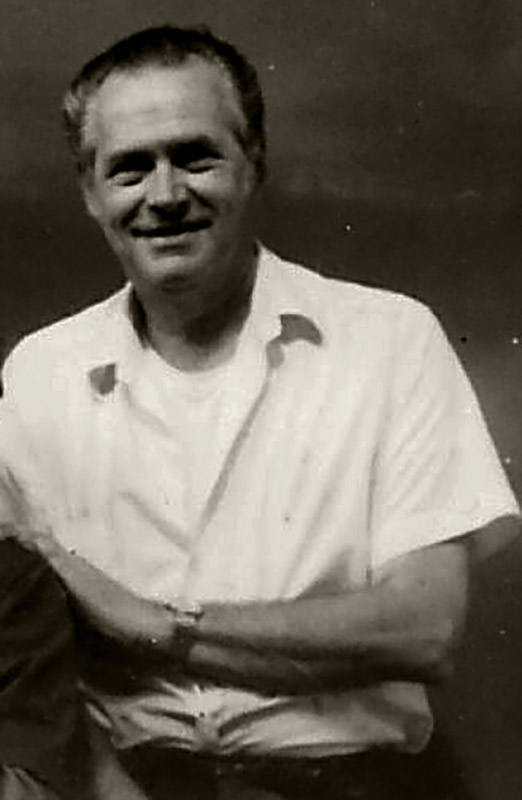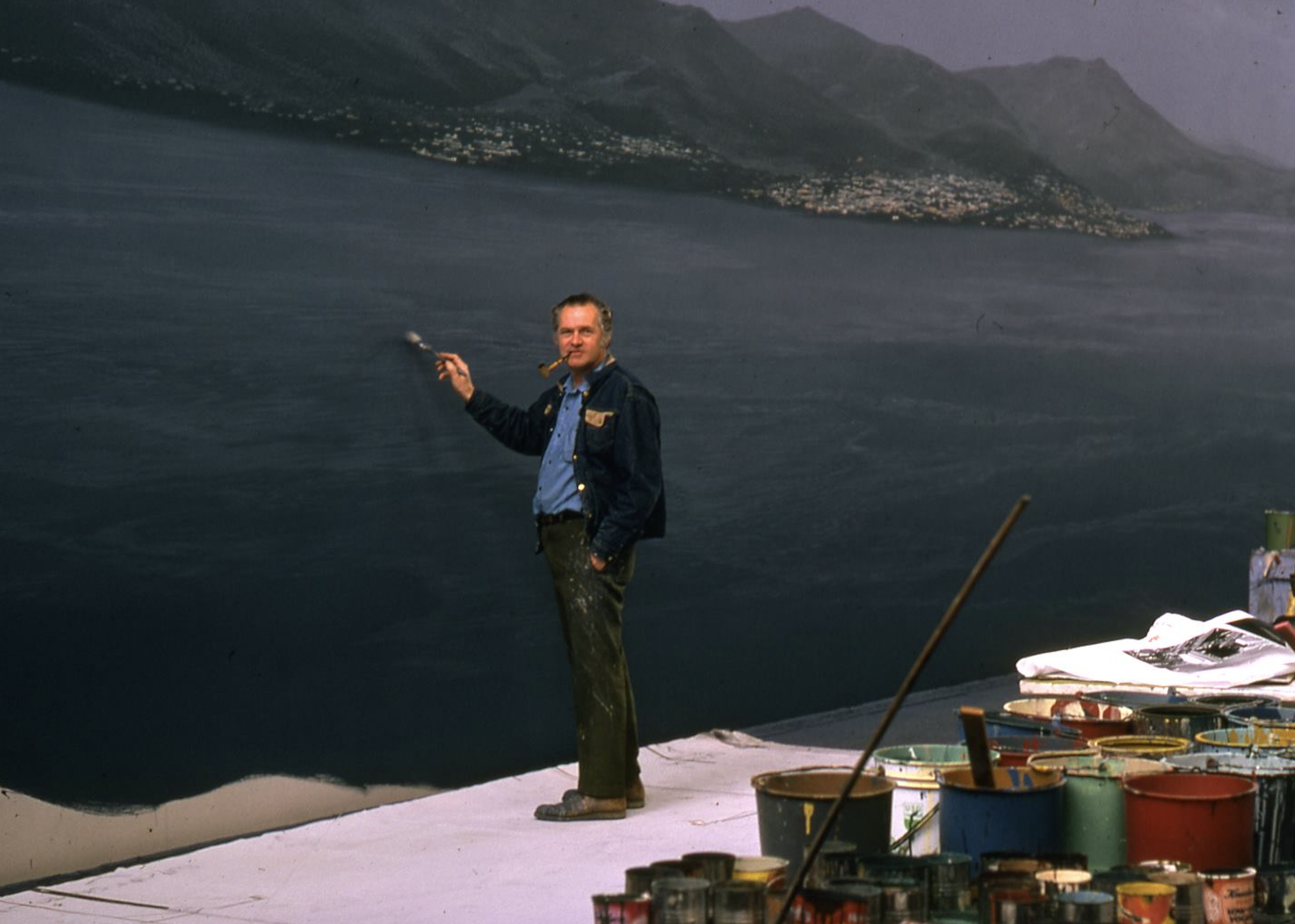Harry Tepker
(1923 – 1998)Tepker worked at MGM from 1949 to 1977, taking over the scenic art department as scenic art supervisor after George Gibson’s retirement. Tepker, trained by Gibson, was a consummate production artist. He was exceptional in creating the illusion of aerial perspective and explaining this technique to his assistants. The color palette was straightforward and always set up the same way. He would establish the foreground colors, middle distance colors, and distance colors for each painting. Each zone of distance would have a warm and a cool color set at a specific value. Tepker would then move back and forth between each value zone’s colors to build up the image. Tepker was adept at this painting style and generous in teaching his successors. This technique was pivotal to MGM’s scenic art success. Gibson’s “1-2-3” style became the aesthetic guide to each painting produced for MGM.
He also worked for 20th Century Fox, Warner Bros., Paramount Studios, Disney Studios, and J.C. Backings Corporation. His painting credits include An American in Paris (1951), Singin’ in the Rain (1952), The Glass Bottom Boat (1966) The Band Wagon (1953), Julius Caesar (1953), Brigadoon (1954), Oklahoma! (1955), Forbidden Planet (1956), Gigi (1958), Ben-Hur (1959), North by Northwest (1959), The Sandpiper (1965), The Shoes of the Fisherman (1968), Ice Station Zebra (1968), Earthquake (1974), The Towering Inferno (1974), King Kong (1976), Logan’s Run (1976), The Hindenburg (1975), and Winter Kills (1979). His television credits include Rawhide and Medical Center.

Lead Scenic Artist Harry Tepker at J.C. Backings

Harry Tepker at J.C. Backings
Courtesy Chris Coakley Collection, Courtesy Andy MacPhee Collection